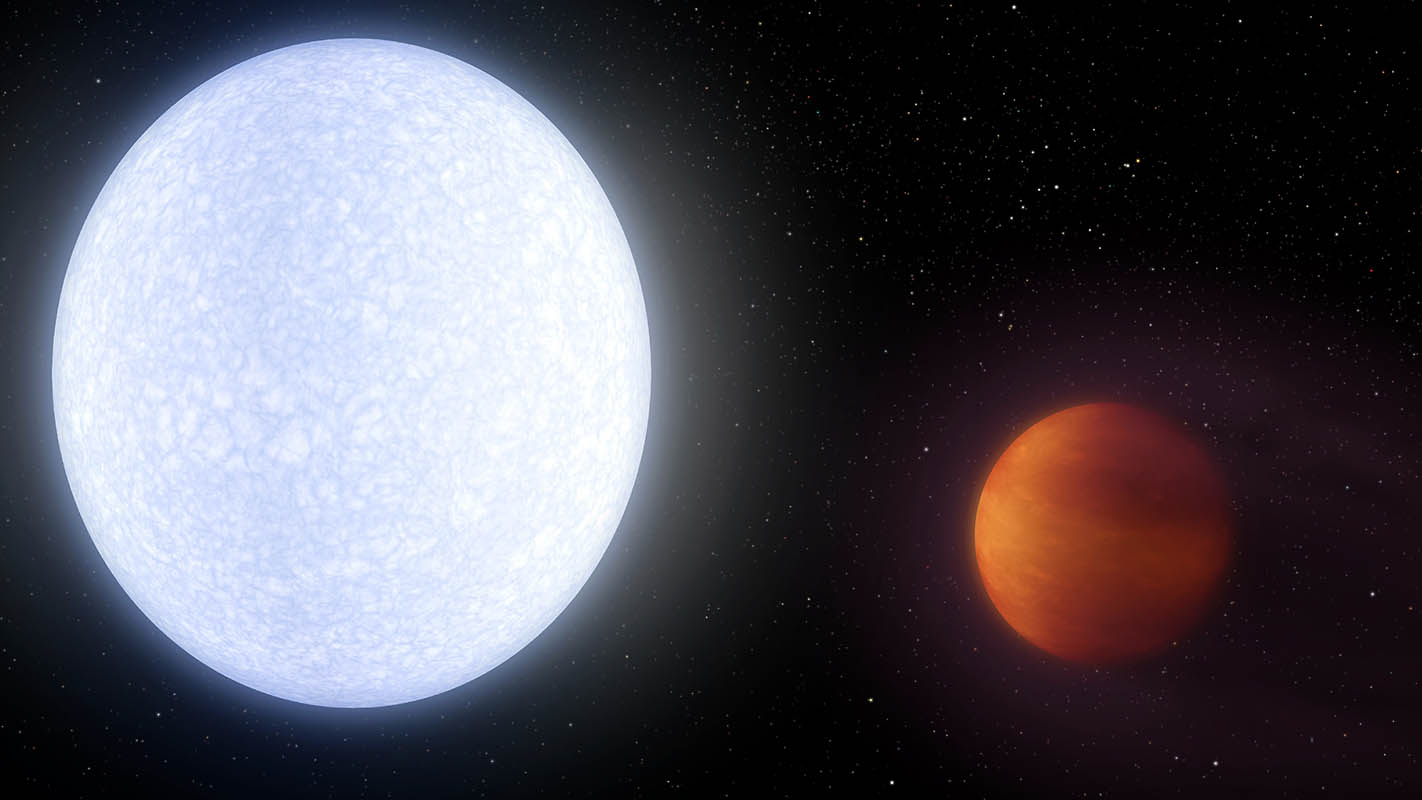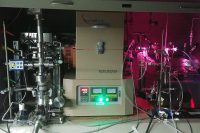This artist’s concept shows planet KELT-9b, an example of a “hot Jupiter,” or a gas giant planet orbiting very close to its parent star. KELT-9b is an extreme example of a hot Jupiter, with dayside temperatures reaching 7,800 degrees Fahrenheit (4,300 Celcius). (NASA/JPL-Caltech)
Home This artist’s concept shows planet KELT-9b, an example of a “hot Jupiter,” or a gas giant planet orbiting very close to its parent star. KELT-9b is an extreme example of a hot Jupiter, with dayside temperatures reaching 7,800 degrees Fahrenheit (4,300 Celcius). (NASA/JPL-Caltech) This artist's concept shows planet KELT-9b, an example of a "hot Jupiter," or a gas giant planet orbiting very close to its parent star. KELT-9b is an extreme example of a hot Jupiter, with dayside temperatures reaching 7,800 degrees Fahrenheit (4,300 Celcius). (NASA/JPL-Caltech)



